Why was the 1995/1996 Gladiators run cancelled?
At one point, Gladiators was the highest-rated show and was still number one in its slot until its cancellation, and it’s popularity was undeniable to many Australian millennials growing up in the mid 90s.
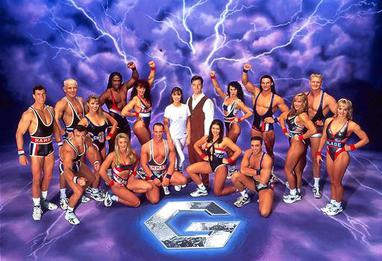
As a young child growing up in the mid-90s, you may remember Gladiators as one of the hottest TV shows, especially in 1995. There were show bags, action figures, and even its own dedicated magazine. In 1995, the Gladiators were some of the most famous people in Australia.
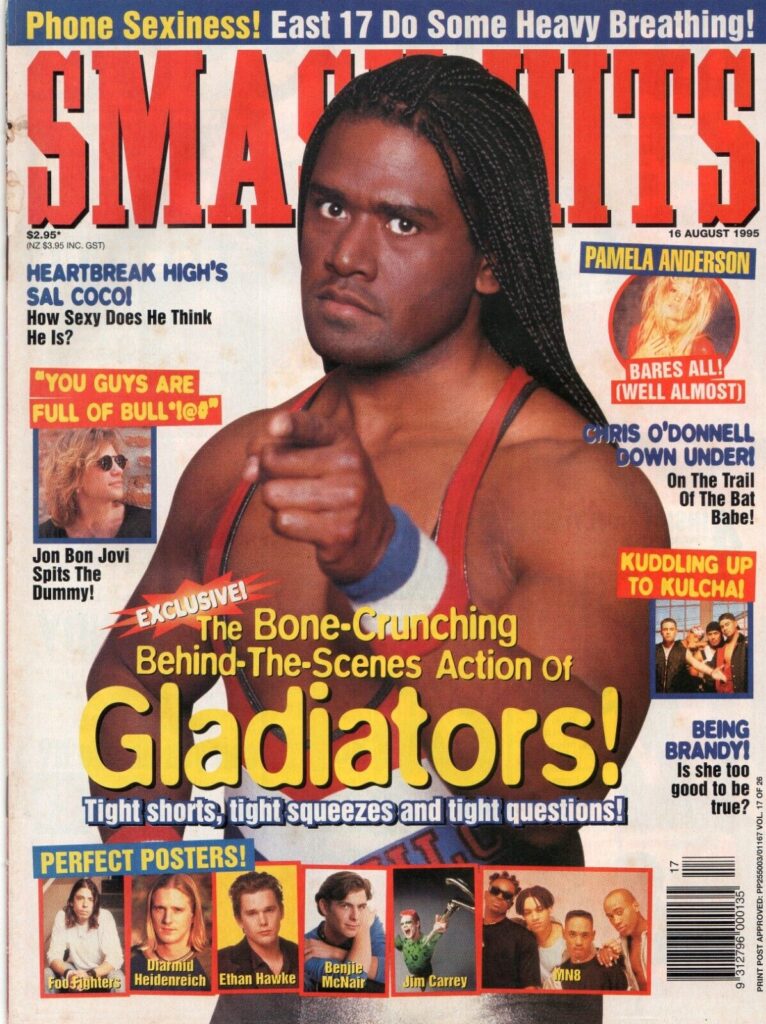
Gladiators premiered on April 23, 1995, on Seven and its affiliates on a Saturday night at 6.30pm, with the infamous 90s franchise and forgotten Robocop show premiering straight after.

It was the highest-rated number-one show the week it premiered, proving to be an instant hit, with 639,000 viewers on its first night. In comparison, the iconic Hey Hey It’s Saturday finished that week at number 42, with 403,600 viewers. It continued to dominate ratings throughout its 1995 run.
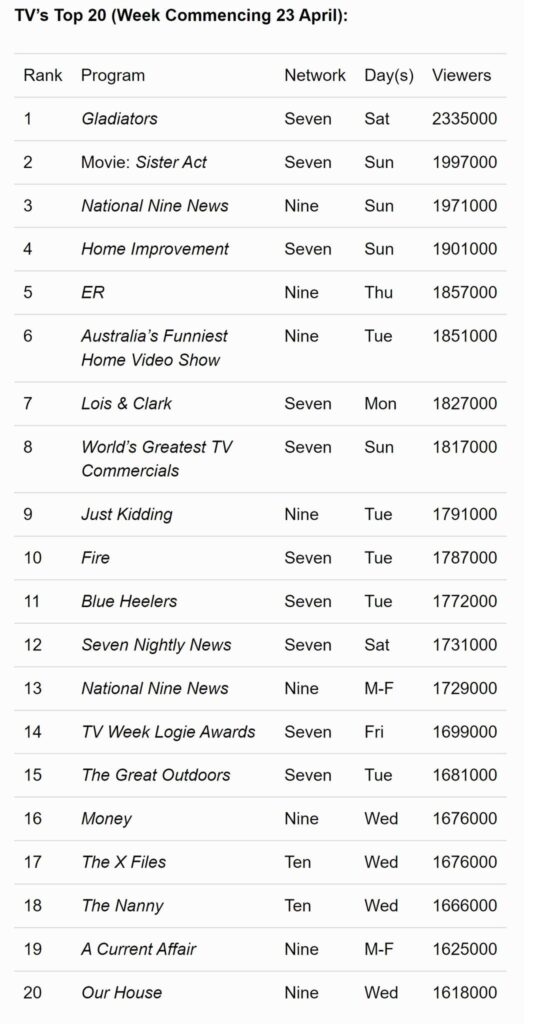
At the peak of its popularity, there was board games, free tazo’s in cereals, action figures, a CD soundtrack and showbag.
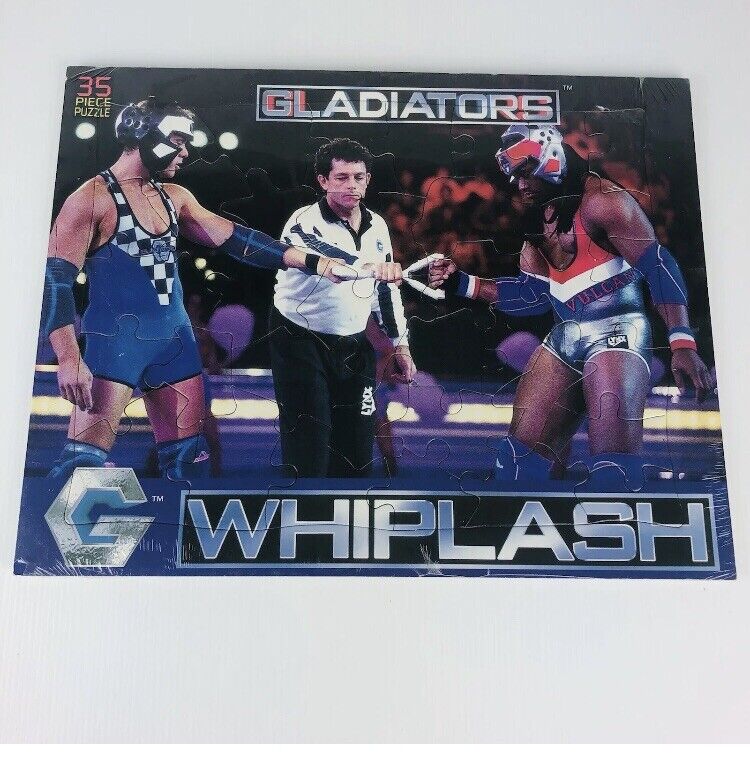
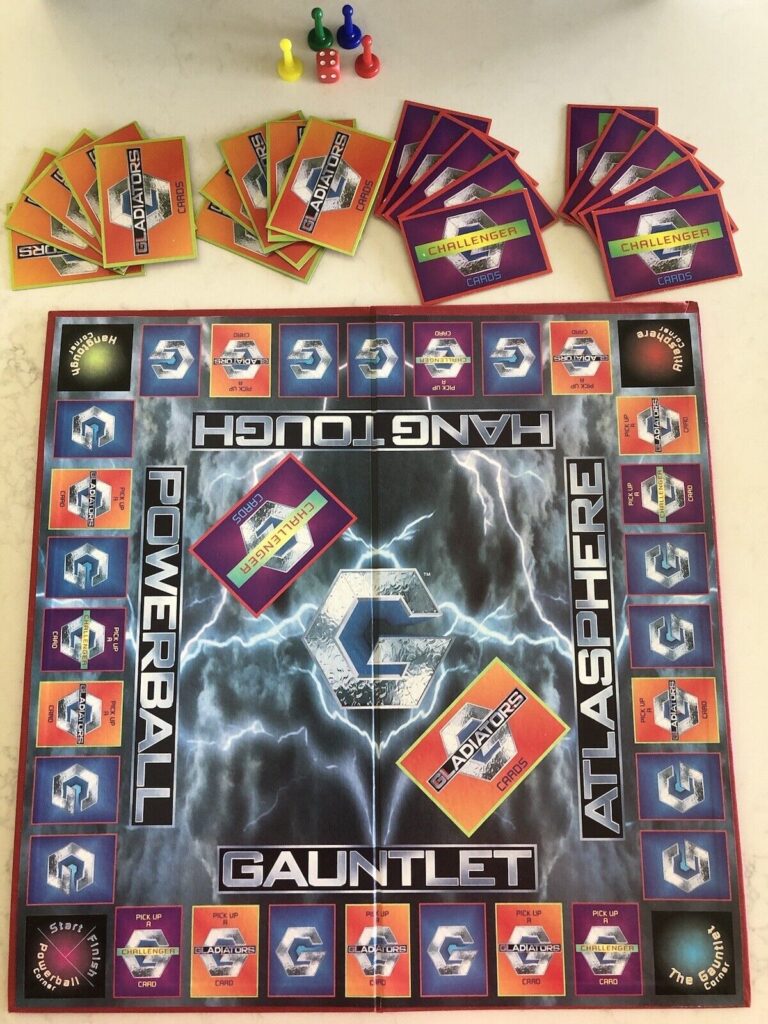
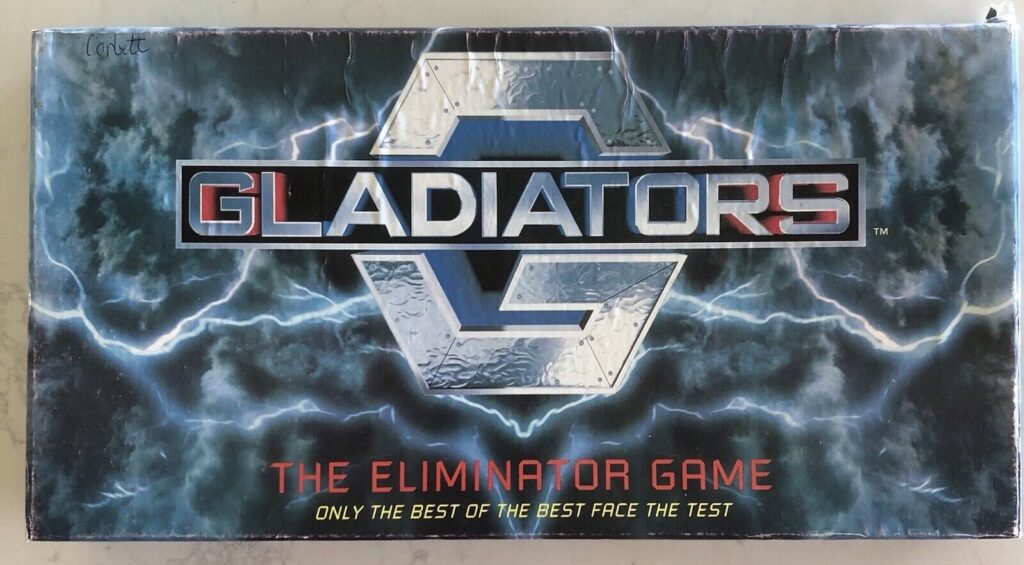
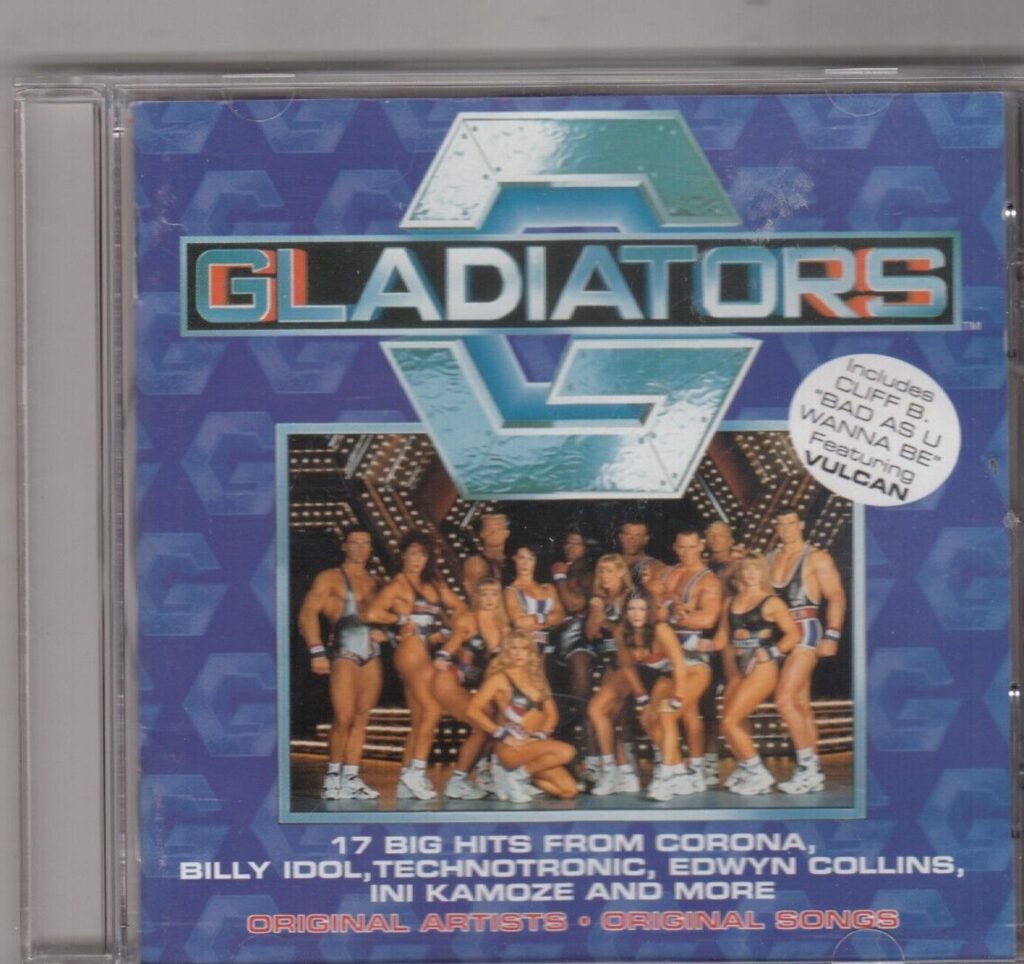
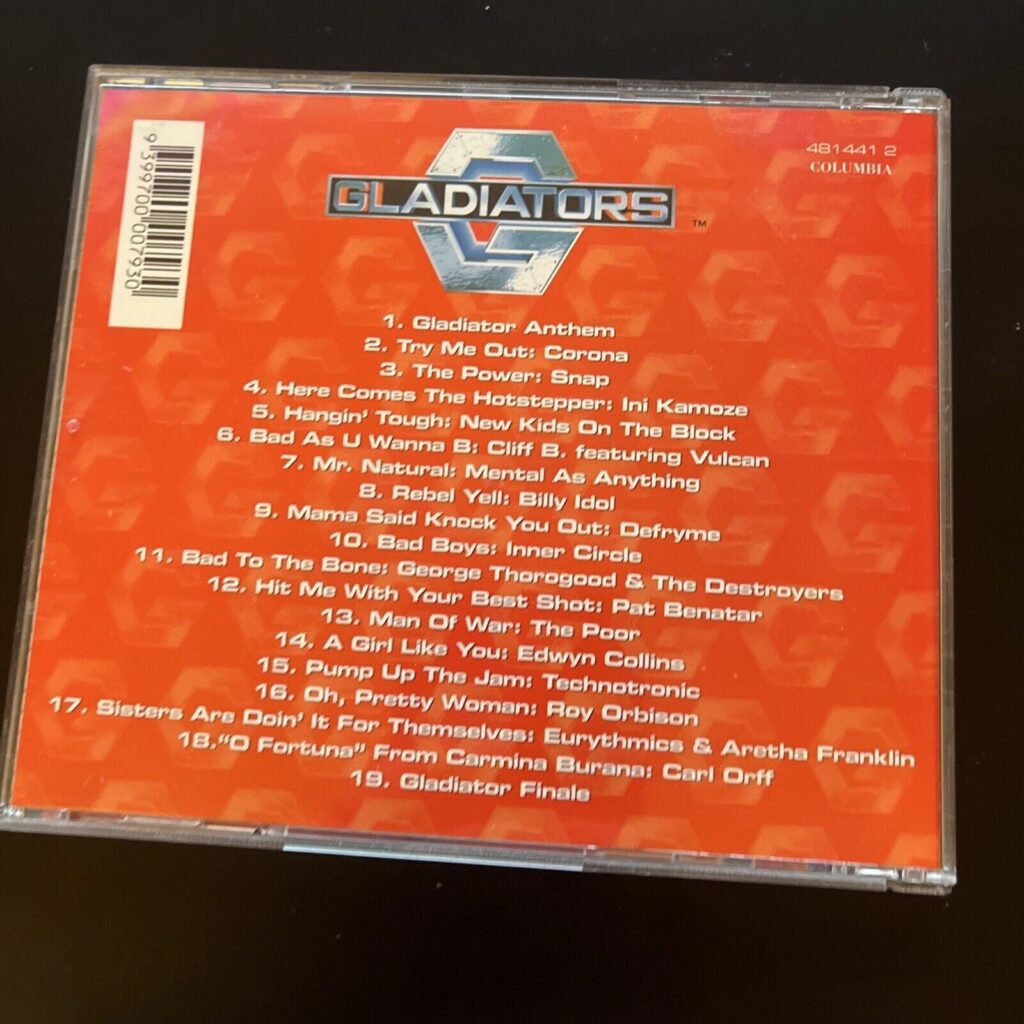
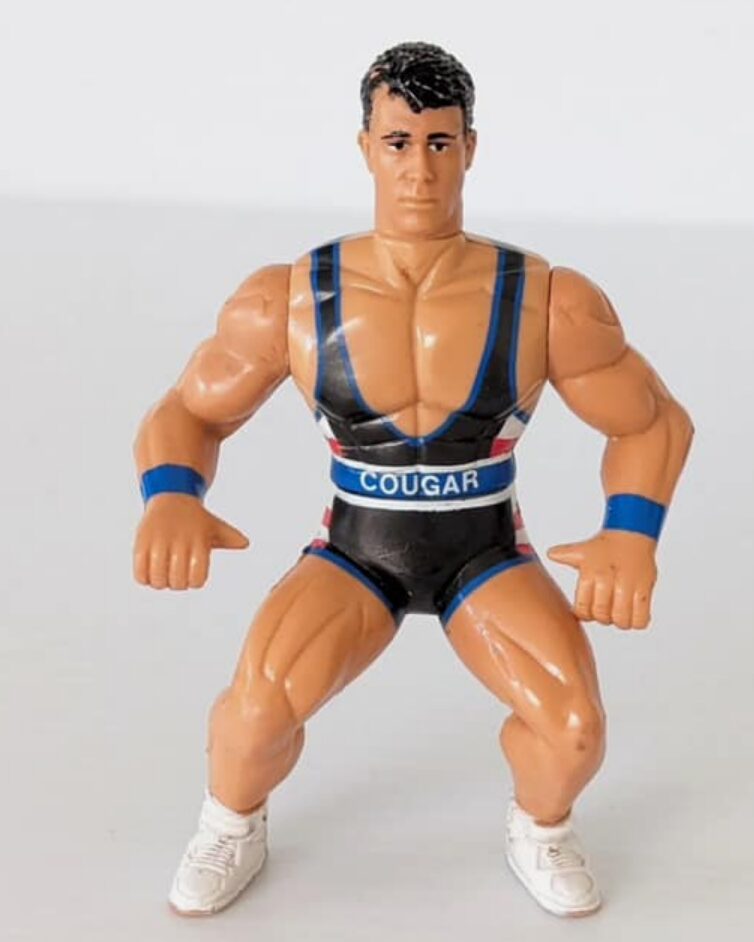
The line up of Gladiators was as follows:
Male
Commando – Geoff Barker (Series 2 & 3)
Condor – Alistair Gibb
Cougar – Ashley Buck (Series 1 and 2)
Force – John Gergelifi (Series 1)*
Hammer – Mark McGaw
Predator – Tony Forrow (Series 2 and 3)
Taipan – Michael Melksham
Tornado – Tony Latina (Series 3)
Tower – Ron Reeve
Vulcan – John Seru
Note: *Force suffered an injury in Atlasphere in the third quarter-final and had to retire from the show.
Female
Blade – Bev Carter
Cheeta – Nicky Davico
Delta – Karyn Lenehan
Electra – Roz Forsyth (Series 3 Reserve)
Flame – Linda Byrnes
Fury – Julie Melksham (née Saunders)
Glacier – Lourene Bevaart (Series 3)
Rebel – Barbara Kendell (Series 1 and 2)
Storm – Charlene Symond

Events in the 90’s Aussie Gladiators included
Events
Atlaspheres
The two challengers and the two gladiators are caged in large Atlaspheres (spherical metal cages) that they have to propel themselves from within. The challengers’ task is to roll the spheres onto any of four scoring pods, each pod scoring two points. They are given 60 seconds to score as many points as they can in this fashion, whilst the gladiators must block the challengers from scoring.
Duel
The challenger and a gladiator are each placed atop of an elevated platform with a short distance apart. Armed with a pugil stick, they would attempt to cause the other to fall from their platform within 30 seconds. This could be achieved with either an offensive or a defensive strategy, although some challengers were disqualified if they made no attacking move towards the gladiator. A score of 10 points is awarded if the challenger knocks the gladiator off the platform. If the challenger manages to stay on the platform for the entire 30 seconds but doesn’t knock the gladiator off the platform, they score 5 points.
Gauntlet
The challenger has to run through a gauntlet while passing five gladiators armed with ramrods. The second and fourth having power pads to slow the challenger down. The challenger must run through the course within 30 seconds to earn 5 points but if they run through the course within 20 seconds, they earn 10 points.
Hang Tough
The challenger and gladiator begin on opposite sides of the arena, on raised platforms. Between them hangs a grid of suspended rings, similar to gymnastic rings. The challenger’s task is to reach the gladiator’s platform by swinging between the rings, scoring ten points if successful. The gladiator meanwhile, swinging in the opposite direction, would attempt to intercept the challenger and pull them down. If the challenger manages to hang on for the entire 60 seconds regardless if he/she knocks the gladiator, and reaches the fourth row of rings (painted red) but not the opposite platform, they score 5 points.
Hit and Run
The challenger has 30 seconds to run back and forth across a suspension bridge, scoring two points for each crossing. Four gladiators (two on each side of the bridge) attempt to knock the challenger off using four large demolition balls.
Joust
The challenger and the gladiator sit on skybikes that twist, buck and spin like a rocking rodeo. Both players have combat clubs with which they attempt to knock each other off. The challenger would score 10 points for knocking the gladiator off, 5 for staying on for the 60 seconds. The music played during the Australian version of the Joust was actually the Pole-Axe music used in the UK version of the show. Also, the actual Joust game used in Australia was shipped over from the UK Gladiators, after the game was retired in the UK version.
Powerball
Two challengers face three gladiators on the Powerball pitch. Challengers had 45 or 60 seconds to place balls in the five scoring baskets on the pitch (2 points for a score in one of the four outer baskets and 3 points for the middle) whilst the Gladiators had to prevent them from scoring by tackling. (The amount of time in this game varied from season to season)
Pursuit
Two challengers race against each other over an obstacle course, chased by two gladiators. The challengers run first then the gladiators run three seconds later. The course comprised a snake beam, hand ladder, wire bridge, two web traps, a high and low wall and a sprint finish. First challenger to finish the course scores 10 points, second five. If at any point the challenger gets tagged by the chasing gladiator, they score no points. If the challengers fail to complete certain parts of the course or knock over any part of the course (ie… coloured markers), they may be allocated penalties of 1 or 2 points per infringement.
Pyramid
Two challengers and two gladiators face each other on a giant pyramid. The challengers aim to reach the summit, whilst the gladiators aim to stop them by throwing the challengers down to the bottom. The first challenger to reach the top of the pyramid and push the button within 60 seconds would score 10 points. If the other challenger could make it in the remaining time, they would score 5. If a Gladiator attacks a challenger while they are on the bottom step or makes a tackle below the waist however, the challenger is awarded ten points even if they did not make it to the top.
Skytrak
Two challengers and two gladiators compete in this event, which was a race around an eight-figured track suspended from the ceiling. Both competitors and gladiators competed upside down. The contestants got a small head start and the Gladiators would have to hit a buzzer trailing behind the contestant in order to eliminate them.
Suspension Bridge
The challenger and gladiator, armed with hammerheads, face each other on a suspension bridge. The challenger has 30 or 60 seconds to cross the bridge for 10 points. If they can survive for the full-time, they score 5. (The amount of time in this game varied from season to season)
Swingshot
The challengers and gladiators are suspended and attached to bungie cords facing towards the centre of the arena where a basket of coloured balls sit atop a high column. The challengers are to drop towards the ground, bounce up to grab a coloured ball, then bounce back to their stations where a scoring basket sits. Gladiators have to time their jumps to block the challengers’ movements. The red balls are worth three points, the blue balls are worth two and the white balls are worth one.
Tilt
An aerial tug of war in which both the challenger and the gladiator are on tilting platforms. The challenger is placed on the lower platform, which is tilted back, and the gladiator is placed on the higher platform tilted forwards. Because of their weight advantage, the gladiators had the harder job of having to tilt their table back in order to get any leverage on the rope. Two 30-second bouts are played. The challengers earn five points each time they pull the gladiator out of their platform, two for staying on for the 30 seconds. The event was axed after Series 2. Gladiators have stated that this game was very difficult for the Gladiator, and was heavily in favour of the contestant due to the height of the Gladiator’s podium, and therefore gravity.
Wall
The challengers climb up a wall with hand and foot holds while the gladiators are set off seven seconds behind. First to the top of the wall scores 10 points, second five. A challenger can still score 5 points if they manage to hang onto the wall for the full minute. Male and Female challengers had different walls to climb.
Whiplash
The challenger and gladiator grip a “dog bone” and the challenger must use this to pull the gladiator out of the ring, earning 10 points if successful. Both players must grab and hold on to the dog bone and they may use tactics to force the other player to let go of the bone, and win the game.
The Eliminator
This event is played at the end of every episode. It involves a head-to-head contest between the two female challengers, and between the two male challengers. They both have to complete an obstacle course in the quickest time possible. The challenger who has earned the most points throughout the episode starts the course earlier than the other, based on how many points they were leading by. For every point they lead by, they start half a second earlier.
In the original series the course consisted of padded hurdles of varying heights, a rope climb, monkey bars (a hand bike for male challengers during Season 2–3), running across spinning logs, climbing up a cargo net, going down a flying fox, walking across a balancing beam, running up a travelator which is going in the opposite direction, then after that, the first challenger to swing on a tarzan rope through the crate paper banner at the finish line is the winner of the episode.
Each Saturday night families gathered around the television screen watching contestants go against the famous Gladiator team, it was must-see family viewing, and the talk of the school during 1995. Kids would often re-enact events at home on the couch and playground. That rocking intro was iconic and pulled you in.
Gladiators aired on Saturday nights on the Seven Network from 29 April 1995 until 12 October 1996 almost consecutively for eighteen months. It was based on the international popular franchise of the same name, which started with American Gladiators in 1989. However the Australian show was more heavily based on the British version of the 1990s with events, format and even music being used from that show.
All three series of the show were filmed at the Brisbane Entertainment Centre in 1995 and was hosted by Kimberley Joseph and Aaron Pedersen, with Mike Hammond replacing Pedersen after the first series. The show was refereed by John Alexander in the first series, and Mike Whitney after that. John Forsythe served as assistant referee.
So why did Gladiators end?
The popularity of Gladiators changed during 1996, and ratings started to drop. By the first week of October 1996, it only pulled in 266,300 viewers in the ratings, ranking at number 75.Although not considered bad, it was no longer hitting the top 10 in ratings anymore, like it had been throughout 1995.
Seven announced at the end of October 1995 that it would no longer produce new episodes due to a drop in ratings.
However, insiders told the media the real reason. It was Costs.
It would cost more than $200,000au (roughly $430k today) an episode. This was very expensive for a reality-based sports program and, in general, any Aussie TV show at the time.
Gladiators was canceled because it was too expensive to make, and the ratings weren’t high enough to justify continuing to make it.
It was reported, “that while the show’s Saturday night ratings were good, the big budget production was costing too much money”. “If you’re spending that kind of money, a show can’t just win its timeslot; it has to win by a substantial margin.”
It was reported that the $200k minimum per episode was a major drain on the network’s budget, and Seven decided to divert the funds into other top-rated shows, one of which was Police, Camera, Action, which gave a greater return on investment.
The Gladiators who had quit their normal jobs were out of work just before Christmas, and they were highly disappointed. Most of them returned to their older jobs if they could, before Gladiators, Flame was an ambulance officer, Predator was a police officer, Hammer was a professional footballer and Tower was in the Air Force.
/

Leave a Reply